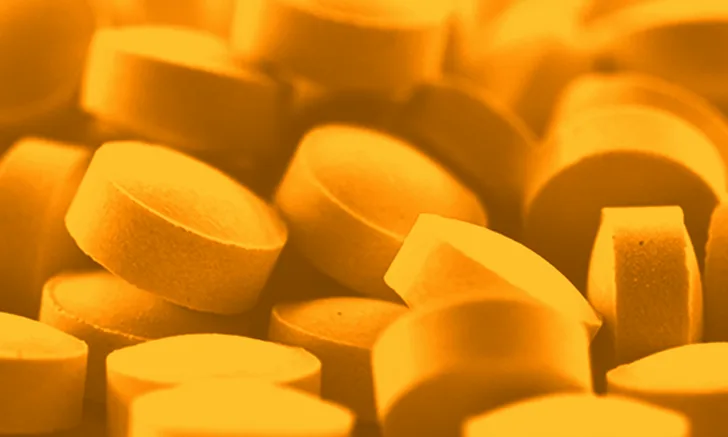Phenobarbital
John H. Rossmeisl, Jr., DVM, MS, DACVIM, Virginia Tech

Phenobarbital is an effective antiepileptic drug used in dogs and cats.1-3
Overview
Many adverse events associated with phenobarbital (PB) use in dogs and cats are transient; others are acceptably managed with appropriate client education.1,3
Hepatotoxicity can develop in dogs treated chronically with PB,3-6 but
Is avoidable with diligent therapeutic monitoring
May be reversible with prompt drug withdrawal and supportive therapy
Early recognition and treatment are key in resolving any complication that may arise.
Adverse Events
Adverse events are more commonly observed in dogs than in cats.2,3
Common acute and transient adverse behavioral effects include sedation, hyperexcitability, and restlessness.
Signs resolve in most patients within 2 weeks of starting therapy.1,3
Improvement may result from induction of PB biotransformation over time.
Frequently reported chronic and persistent side effects are polydipsia, polyuria, and polyphagia.
Can be intolerable to some owners, requiring changing the antiepileptic drug (AED)1,3
In dogs, subacute-to-chronic treatment is often associated with subclinical laboratory abnormalities, including3,7
Decreased total and free thyroxine concentrations
Mild-to-moderate elevations in ALP and, to a lesser extent, ALT
Toxicities & Severe Reactions
Hepatotoxicity
Most common clinically significant, severe complication associated with PB3,4,8
Risk factors include
Chronic PB use
Serum PB concentrations >35 μg/mL (151 µmol/L)
Concurrent therapy with other hepatotoxic drugs (see Warnings)
May result in irreversible and fatal hepatic failure
Clinical signs
Abdominal effusion
Anorexia
Icterus and pigmenturia
Marked sedation and ataxia
Vomiting/diarrhea
Laboratory abnormalities
Elevated bile acid concentrations
Low serum albumin (hypoalbuminemia)
Increased serum PB concentration without dose escalation
Moderate-to-marked elevations in ALP and ALT
Blood dyscrasia3,5
Rare idiosyncratic reaction that usually develops within several months of therapy
Clinical signs
Anorexia
Fever
Lethargy
Splenomegaly
Spontaneous hemorrhage
Laboratory abnormalities
Neutropenia
Thrombocytopenia
Anemia
Superficial necrolytic dermatitis8
Multifocal dermatopathy characterized by erythema and papules that progress to erosions
Predilection for footpads, mucocutaneous junctions, and axillary and inguinal regions
Can develop with chronic PB administration
Often associated with laboratory, ultrasonographic, and histopathologic evidence of hepatic disease
Overt clinical hepatic failure is rare.
Dyskinesia6
Rare reaction defined by abnormal, involuntary, repetitive muscle movements that distort or impair voluntary motions
Treatment Monitoring & Precautionary Measures3-6
CBC, serum chemistry panel, and urinalysis should be performed before PB therapy is initiated.
After steady-state PB concentrations are confirmed (at approximately 2 weeks), monitor serum PB concentrations, serum chemistry panel findings, and serum bile acids q6mo in patients on chronic PB therapy.
Serious hepatotoxicity requires
Prompt PB discontinuation
Appropriate symptomatic and supportive care
Fluids
Gastric protectants
Dietary and nutraceutical hepatic support
Management of hepatic encephalopathy or coagulopathy (if present)
Other measures as indicated
Acute PB withdrawal may precipitate seizures.
Consider loading with additional AED (eg, potassium bromide).
Hepatotoxicity, myelosuppression, and dyskinesia may be reversible with prompt recognition and treatment.
Warnings3,4
Avoid PB use in patients with preexisting hepatic disease.
Risk for clinically significant liver dysfunction may increase when PB is administered with other hepatotoxic drugs.
May potentiate sedative effects of CNS depressants (eg, anti-histamines, benzodiazepines, narcotics)
Hepatic or intestinal P450 activities induced by PB may result in drug interactions by increasing drug metabolism, resulting in
Reduced blood concentrations and therapeutic efficacy (eg, cyclosporine, doxycycline, zonisamide, mitotane)
Increased active metabolites of parent compound, thus potentiating therapeutic effects or causing toxic effects (eg, acetaminophen)